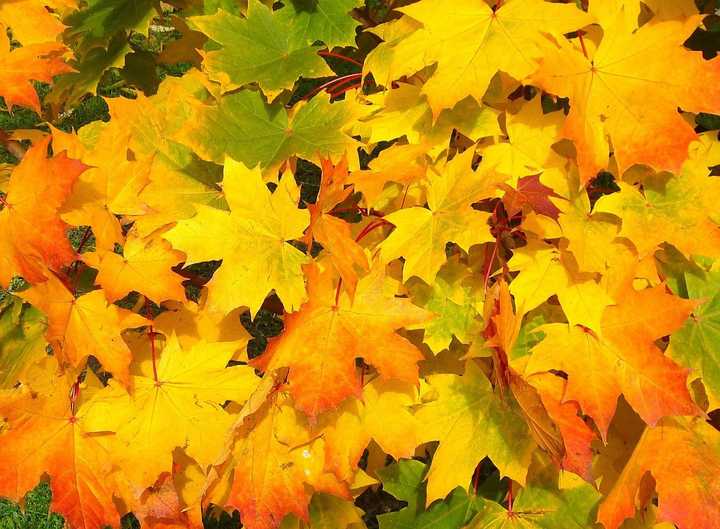
The Earth is Drowning in Plastic. Will Enzymes from this Plastic Eating Bacteria Provide New Hope?
Scientists show how re-engineering enzymes from a plastic eating bacteria, can provide us new avenues in plastic degradation.

As the heat of the summer ends and we enter the months of September and October, we might start to observe interesting things happening around us. We may notice that the days begin to get shorter and colder. If you are living in the colder parts of the world, you would see the leaves on trees dramatically change colour, going from green to yellow to red. Eventually, these leaves would be shed off completely.
If you haven’t guessed yet, I am talking about the autumn season!
Of all the seasons, autumn will indeed have to be one of the most interesting seasons out there. As the earth slowly changes its position with respect to the sun, the seasons shift and all the living things on earth also quickly adapt to this change. So let’s take a deep dive into some of the unique things that take place in autumn, and let’s see if we can use science to explain why they happen.
Let’s revisit some high school physics, shall we? We know that the earth revolves around the sun and it takes one year for it to do so. It also rotates about its own axis. This axis is slightly tilted and remains in the same titled position all year long. This means that the sun’s light falls on earth differently at different times of the year. This forms the basis for all the seasonal changes we experience round the year.
We experience summer in the northern hemisphere in the months of May and June when the north pole is tilted towards the sun. At this point, the sunlight hits the northern hemisphere more directly, resulting in longer and hotter days. Note that at this point, the south pole is tilted away from the sun and hence the southern hemisphere experiences winter. However, when we reach the months of August and September, the earth is neither tilted towards nor away from the sun. Hence, the long and hot summer days change into the shorter and colder days of autumn. On the other hand, the southern hemisphere would experience spring at this point in time. It would experience autumn in the months of March and April instead.
It is also noteworthy that these seasonal changes are starker in the temperate zones of the northern and southern hemispheres. People living in tropical regions wouldn’t experience these changes as much.

Leaves of many trees in the autumn season slowly go from shades of green (due to chlorophyll) to yellow (due to carotenoids) and finally to red (due to anthocyanin). Image by Shirley Hirst from Pixabay.
Unlike us, plants are immobile beings and need to come up with unique ways of dealing with seasonal changes. As the days get shorter and the available sunlight is drastically less, many trees begin to conserve their resources. They do this by degrading the nitrogen-rich chlorophyll pigment in their leaves and reabsorbing the nitrogen present in the chlorophyll.
Interestingly, chlorophyll is not the only pigment present in leaves. It also contains pigments called carotenoids, which are yellow in colour. This colour is normally masked by the green of chlorophyll. However, when chlorophyll is degraded, the colour of the carotenoids gets unmasked and the leaves begin to look yellow.
But what about the beautiful shades of red we see in autumn leaves? This colour is actually due to the pigment anthocyanin, which is mostly found in fruits and flowers. However, leaves start to make this pigment in their leaves in response to the cold temperatures of autumn. Some scientists also believe that these colours might help keep away predatory insects (Ougham et al., 2005).
The changes in leaf colour from green to yellow to red might appear as a beautiful, colourful event to us. However, for the trees, it’s simply a response to seasonal stress.

Many trees shed their leaves during the autumn season to conserve their resources for the upcoming cold and dark winter months. Image by Pexels from Pixabay.
Autumn is famously called ‘fall’ as many trees tend to shed their leaves off completely. This is because leaves are a very expensive investment for a plant, owing to the nitrogen-rich chlorophyll pigment they contain. Plants use sunlight to make glucose through a process called photosynthesis. Glucose is then used to derive energy through the process of respiration. This energy is in turn used to construct different parts of a plant, like leaves and flowers and pigments like chlorophyll. However, when the amount of sunlight reduces, plants need to strategise their energy investment differently.
Many trees do this by degrading the chlorophyll in their leaves and shedding their leaves off. In short, they stop investing in their leaves. This is why leaves in autumn slowly start losing their green colour and eventually fall off the tree. They only invest in growing their leaves in the spring and summer months. These trees that shed their leaves in the autumn and winter months are called deciduous trees (Eamus, 2002). However, there is another category of trees that hold on to their green leaves all year long - the evergreen trees. In fact, they employ a unique mechanism in doing so.

Some species of bears, like the grizzly bears, tend to ‘overeat’ during the autumn months. This helps them store energy for the upcoming winter season. Image by Marg Strickland from Pixabay.
Unsurprisingly, plants are not the only beings affected by seasonal changes. Animals are affected too. Hence different animals find different ways of dealing with this change.
When it comes to interesting adaptations, bears are a great example. Some species of bears are known to ‘overeat’, also called hyperphagia, during the autumn months. This helps them store enough energy for the upcoming winter months when the availability of food is less and the climate too harsh to hunt for food. Research even shows that their genes are regulated differently in the autumn and winter months. This helps them cope with all the excessive eating while still maintaining normal blood sugar levels (Jansen et al., 2019).

The red knot is a species of bird that migrates from the cold arctic to the warmer southern hemisphere in preparation for the winter months. During its long journey, it makes small stops on several beaches in the autumn months. Image by PublicDomainImages from Pixabay.
Migration in birds is yet another fascinating example. Several species of birds are known to migrate from the cold arctic to the warmer southern hemisphere as the seasons change. However, they often make small stops along the way in the autumn months. A certain species of bird called the Red Knot is famous for its long-distance migratory habits and for making pit stops on several different beaches. They are also known to make stops at the same locations each year!
_Thanksgiving_Dinner.jpg). What originated as a harvest festival in 1621, thanksgiving has now come to be a national holiday in the USA and a few other countries. It is typically celebrated with a feast of turkey, potatoes, cranberries and pumpkin pie. Credit: [Wikimedia](https://commons.wikimedia.org/wiki/File:Our_(Almost_Traditional)_Thanksgiving_Dinner.jpg).](/static/ae9058e2e6d659f73e0531dcd05e0e39/80e3c/the_harvest_festivals_thanksgiving.jpg)
What originated as a harvest festival in 1621, thanksgiving has now come to be a national holiday in the USA and a few other countries. It is typically celebrated with a feast of turkey, potatoes, cranberries and pumpkin pie. Credit: Wikimedia.
With the long growing season of summer coming to an end, autumn is an important season for the harvest of many crops. This includes everything from apples and grapes, to tomatoes, potatoes and onions. Now it goes without saying that a good harvest brings along with it several festivities.
There are many interesting autumn harvest festivals celebrated across the world, but one of the most popular among them has to be Thanksgiving, mainly celebrated in the USA and Canada. It is said to have started in the autumn months of 1621, when the English colonists, called the Pilgrims, celebrated their successful wheat crop in Massachusetts. The day has now come to be a national holiday in the USA and a few other countries. It is traditionally celebrated with a delicious feast of turkey, potatoes, cranberries and pumpkin pie!

The Moon Festival is famous for its delicious mooncakes made out of lotus paste and egg yolk. Image by meongan278 from Pixabay.
Talking about the autumn harvest, another autumn harvest festival worth mentioning is the Moon Festival, celebrated in China and a few other Asian countries. This festival is celebrated in September or early October when families gather to share a delicious meal and marvel at the moon. The highlight of the meal, however, are the mooncakes which are made of lotus seed paste and a salted egg yolk centre, symbolising the moon.
It is indeed interesting to observe how the simple movement of the earth around the sun can bring about so many changes - in plants, animals and human cultures across the globe.